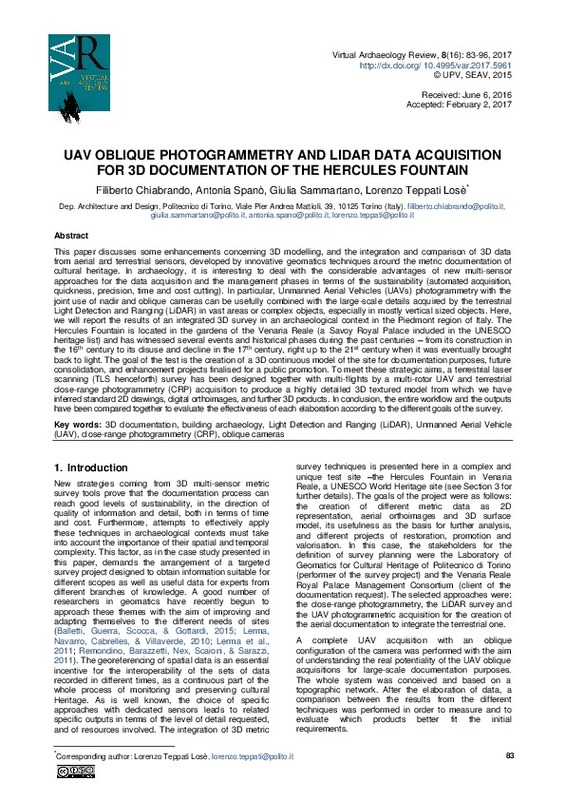JavaScript is disabled for your browser. Some features of this site may not work without it.
Buscar en RiuNet
Listar
Mi cuenta
Estadísticas
Ayuda RiuNet
Admin. UPV
UAV oblique photogrammetry and lidar data acquisition for 3D documentation of the Hercules Fountain
Mostrar el registro completo del ítem
Chiabrando, F.; Spanò, A.; Sammartano, G.; Teppati Losè, L. (2017). UAV oblique photogrammetry and lidar data acquisition for 3D documentation of the Hercules Fountain. Virtual Archaeology Review. 8(16):83-96. https://doi.org/10.4995/var.2017.5961
Por favor, use este identificador para citar o enlazar este ítem: http://hdl.handle.net/10251/82706
Ficheros en el ítem
Metadatos del ítem
| Título: | UAV oblique photogrammetry and lidar data acquisition for 3D documentation of the Hercules Fountain | |
| Autor: | Chiabrando, Filiberto Spanò, Antonia Sammartano, Giulia Teppati Losè, Lorenzo | |
| Fecha difusión: |
|
|
| Resumen: |
[EN] This paper discusses some enhancements concerning 3D modelling, and the integration and comparison of 3D data from aerial and terrestrial sensors, developed by innovative geomatics techniques around the metric ...[+]
|
|
| Palabras clave: |
|
|
| Derechos de uso: | Reconocimiento - No comercial - Sin obra derivada (by-nc-nd) | |
| Fuente: |
|
|
| DOI: |
|
|
| Editorial: |
|
|
| Versión del editor: | https://doi.org/10.4995/var.2017.5961 | |
| Tipo: |
|








